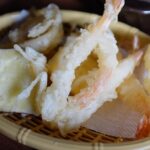Finding a delicious sake to pair with a sushi meal can make a world of difference. We all know that every meal has a unique drink that compliments it better than anything else. Since sake has such a broad flavor profile, it’s crucial that you choose the proper brand. The good news is that you’ll learn everything that you need to know to get the perfect combo today!
The best sake brand to compliment a sushi meal is Momokawa Nigori Genshu Pearl Sake. It’s polished to 60%, making it quite flavorful when combined with the tropical palate. With four ingredients, rice, water, yeast, and koji, Momokawa made an excellent blend for any sushi meal.
Throughout this article, you’ll also learn the following details about choosing the best sake brands to compliment a sushi meal:
- What you need to look for when you’re choosing sake for sushi meals
- The best brands and sake styles on the market
- The importance of alcohol content and polished percentage
Our Top Picks
- Best Overall: Momokawa Nigori Genshu Pearl Sake
- Best Fruity Flavor: Hakutsuru Organic Sake
- Best for the Price: Sho Chiku Bai Organic Nama Sake
- Best Earthy Taste: Momokawa Diamond Junmai Ginjo Sake
- Best for Cooked Sushi: Gekkeikan Sake
- Best Sweet Sake: Nestlé Japan Kit Kat Mini Yuzu Sake
Best Overall: Momokawa Nigori Genshu Pearl Sake
If you’re searching for a sake that’s full of flavor, look no further. Momokawa Nigori Genshu Pearl Sake is loaded with a bold taste that has hints of coconut, sweet rice, bananas, and more fruity flavors. It’s an excellent choice for those who want sake to play an equal role in the sushi meal, but it won’t pull away from the food’s flavor.
Another reason that this sake is a good choice for sushi lovers is that it’s polished to 60%, making it one of the purest sakes on the market. You’ll be able to enjoy the natural flavors that are made from rice, koji, yeast, and water. These basic ingredients keep the sake tasting classic and pleasant.
Bottom Line: The Momokawa Nigori Genshu Pearl Sake takes the cake for a bold flavor that matches almost any type of sushi. It’s a top choice for countless Japanese food connoisseurs, so why not give it a try? You don’t have to worry about artificial flavors, colors, or preservatives. There’s more than enough for a meal in every bottle.
| Polished % | 60% |
| Flavor Profile | Tropical/Fruity |
| Alcohol Content | 14.8% |
Pros
- This sake is ultra-filtered to remove contaminants that might alter the flavor. It’s hard to find sake that comes close.
- It’s creamy and enjoyable. It’s more than a drink; This sake is a portion of the sushi meal.
- Momokawa is one of the top sake brands in the US. If you’re looking for a reputation, you’ve found it.
- It’s a top choice for customers throughout the world for cold-served sake. A few ice cubes and a glass of this sake is all you’ll need to impress your guests.
Cons
- The thick texture could be too much. If you’re enjoying bold flavors from your sushi, it could be a little too masking.
- The tropical flavors are up for debate. Some people love them; some people don’t.
Best Fruity Flavor: Hakutsuru Organic Sake
Too many sake drinks are overwhelmingly fruity or dull and earthy. If you want a tropical taste without ruining the meal, then try Hakutsuru Organic Sake. This pure sake blend gives you a pleasant fruity flavor that’s finished with earthy undertones. Take your sushi meals to the next level with this impressive drink.
Sake One recommends using this sake with lobster sushi and noodles. If you prefer seafood dishes, then there’s no doubt that it would make a perfect addition to the meal. You’ll be able to sip sake to change your palate between each bite, bringing flavor-packed sushi with each roll or bowl.
Bottom Line: Fruity sake has a reputation for being too much, but Hakutsuru Organic Sake gives you a delicious taste without taking away from the meal. It’s smooth and not too thick, so feel free to serve it cold or hot. It’s a top choice for those who love the fruity natural sake taste any time of year.
| Polished % | 70% |
| Flavor Profile | Fruity |
| Alcohol Content | 14.5% |
Pros
- It’s more polished than most sake brands. You’ll enjoy the clean taste without any additives or ‘factory flavors.’
- It’s fruity, but not too fruity. If you want to try this style of sake, then you should start with Hakutsuru.
- It’s not too creamy, which is ideal if you want to keep the focus on the sushi meal. It’s a drink, not a meal (which is the opposite of the previous drink).
Cons
- The flavor profile is subtle (described as ‘light and crisp’). You won’t get too much bold flavor from it.
- It’s designed for hot and cold serving, but it’s much better with ice. Hot sake is typically creamy, but that’s not the case with this one.
Best for the Price: Sho Chiku Bai Organic Nama Sake
On the other side of the flavor spectrum is the Sho Chiku Bai Organic Nama Sake. It’s not too earthy, but you won’t get too much of a fruity taste from it. Brewed in Berkeley, CA, this sake combines Japanese sake and California brewing technology to make one of the best high-quality, budget-friendly choices you’ll find.
Most people are worried about drinking low-cost alcohol (rightfully so!), but this flavor is unlike anything you’ve tasted. It’s difficult to save money while getting a crisp taste, but that’s precisely what you’ll get. Sho Chiku Bai Organic Nama Sake continues to impress those who give it a chance.
Bottom Line: Rather than risking your dime on a low-quality sake to save cash, you can get a budget-cost sake with a bold taste. Although it’s not brewed in Japan, you won’t be able to debate the authenticity once you take the first sip. It’s as smooth and delicious as any other Japanese sake.
| Polished % | 60% |
| Flavor Profile | Earthy |
| Alcohol Content | 15% |
Pros
- You don’t have to break the bank. If you’ve never had sake with sushi, this is a great option.
- It’s relatively polished for cheap sake. Compared to other sakes of the same price, it’s ultra-smooth.
- If you live in the US and you’re ordering it online, you won’t have to pay as much shipping costs since it’s brewed in California.
Cons
- While it’s great for the price, it can’t match the purity and flavor of the Momokawa sake from the top of the list.
- Some people prefer authentic, Japanese-brewed sake. You won’t get that with this brand.
Best Earthy Taste: Momokawa Diamond Junmai Ginjo Sake
Momokawa has another entry on the list. If you’re chasing the classic earthy taste of subtle sake, then reach for Momokawa Diamond Junmai Ginjo Sake. It’s not for those who want strong flavor, but it’s far from tasteless. It’s ideal for any type of sushi meal, so add it to your collection and taste test it!
This sake is made for cooked and grilled sushi rolls and bowls, but that doesn’t mean you can’t enjoy it with raw seafood. It’s a mixture of thick and thin, giving you a texture that feels and tastes excellently, regardless of the temperature. Add a few ice cubes or heat it up before you serve it.
Bottom Line: Earthy sake brings the Japanese flavor that we all know and love. Chefs from around the world enjoy this high-quality, affordable sake. Whether you’re chasing the unmatched flavor or the top-shelf texture, you’ll get what you pay for. The deep earthy taste is combined with apples and pears to level it off.
| Polished % | 58% |
| Flavor Profile | Earthy/Fruity Aftertaste |
| Alcohol Content | 14.8% |
Pros
- It has a favorable combination of earthy and fruity flavors. There’s no doubt that the earthy tastes prevail, but the aftertaste balances everything.
- The quality is consistent. You won’t find a difference between bottles, which is crucial if you’re serving guests.
- It’s made by one of the most trusted brands. You’ve probably read that Momokawa is a top US sake producer.
- You’ll have plenty of sake for the price. Despite the high cost (as you’ll soon see), the company doesn’t cut back on the volume per bottle.
Cons
- It’s a bit pricey compared to other drinks on the list. While it’s not terribly expensive, it’s about two to three times the cost.
- This sake is considered subtle, but it’s slightly overwhelming if you haven’t tasted sake.
Best for Cooked Sushi: Gekkeikan Sake
There are countless sushi styles, but if you’re into cooked rolls and bowls, you should try the Gekkeikan Sake. It might be the last drink on our list, but that doesn’t mean it’s not one of the best. Whether you’re enjoying grilled salmon sushi or raw seafood rolls, it can be a perfect complement to your sushi meals.
Another impressive feature of this sake is that it’s quite alcoholic. At 15.6%, it’s almost a full percent above all other sake drinks on the list. The dry flavor makes it easy to drink without overwhelming or masking the sushi’s taste. It’s been described as earthy and herbal, but there’s also a hint of grapefruit.
Bottom Line: This high-alcohol sake is a fantic complement to a variety of sushi meals. Whether you’re making shellfish sushi or grilled sushi, it’s worth trying. You might not get a bold flavor, but it’s clean, crisp, and refreshing. It’s an excellent choice for warm summer nights and cold winter evenings.
| Polished % | 60% |
| Flavor Profile | Earthy |
| Alcohol Content | 15.6% |
Pros
- If you’re looking for high alcoholic sake, then you’ll prefer this over any other choice on the list.
- It’s earthy enough for a classic sake flavor but subtle enough to enjoy with any sushi meal.
- This sake is one of the most popular choices among people throughout the United States.
- The big bottle is perfect for large parties or random, spontaneous occasions.
- It’s one of the cheapest sakes on the list, making it a top choice for budgeters.
Cons
- Some people might dislike the lack of bold flavors. Again, this is a personal preference matter.
- It’s not as thick as most types of sake, which could be a letdown if you want a classic sake texture.
What to Look for When Pairing Sake With Sushi
If you’ve gone through the whole list and you’re not sure which sake will work best with your sushi, then you’re in the right place. Sake can’t be generalized into one category. There are countless flavor profiles, alcohol percentages, and other factors that will influence your decision. Below, we’ll dive into a list of considerations to pick your favorite sake.
Before we dive into the factors, consider sampling a mixture of sake drinks. A lot of our choices are budget-friendly, so it’s better to taste test a handful of them prior to making a meal for guests. Nobody’s complained about a top-notch sake with high-quality sushi, though. We genuinely believe that you could complement any sushi with any of the sakes mentioned above.
Without further ado, let’s dive into the four factors to know before you buy sake:
How Polished Is the Sake?
Polishing a drink isn’t something that you learn about with most alcoholic beverages. According to Vine Pair, the more polished the drink, the more flavorful and clean-tasting it will be. Needless to say, highly-polished sake costs more money, but it’s worth the price difference if you can swing it. Polished sake typically ranges between 30% to 50%, but some varieties go higher or lower.
Most sake drinks on our list range between 30% to 40%, but there are a few that top the charts. Keep in mind that polish sake isn’t always better when it comes to flavor and texture. You’ll have to find the perfect middle ground that suits your preferences. Trying a few samples is the best way to know what you want for your sushi meals.
What Is the Flavor Profile?
Much like wine and beer, sake has a broad flavor profile. Some sake tastes floral, while others are strong and earthy. It’s up to you to decide which style suits the sushi that you’re eating. Sushi with a strong seafood taste pairs well with floral sake since it’s such a noticeable contrast. On the other hand, vinegary sushi meals work excellently with earthy sake.
Some of the sakes on the list have grapefruit, banana, and apple flavors. On the other hand, many of them are earthy and herbal, favoring their rice origins. Again, this is a matter of personal preference. However, the flavor profile compliments different types of sushi, as you read above.
Alcohol Content
Masumi Sake states that most sake drinks contain between 14% to 20% alcohol. We all know that high alcohol content leads to a stronger, fuller flavor. Sushi without much flavor, such as those centered around the rice rather than the fish, pair well with high-alcohol drinks. Note that the goal of sake is to improve the sushi’s taste rather than overpower it. It would be best if you kept sushi as the center of the meal.
Note: If it’s too alcoholic, you won’t be able to stick around for several rolls or bowls of sushi. Instead, you’ll be focused on drinking more sake or water to balance your intake. For this reason, we’ve kept our sakes between 13% to 16%, which is perfect for long drinking and delicious eating.
What’s It Meant to Be Paired With?
The easiest way to know what sake works for your sushi meal is to review the bottle. Most brands give suggestions. Some sake pairs with ramen, whereas other styles are the perfect choice for sushi. You can mix and match, but these recommendations are a great starting point for beginners.
For more information about this section, search the flavor profile subheading earlier in the article. In a nutshell, some profiles are made to suit specific flavors. These company recommendations can take the stress out of serving and pairing. Keep in mind that sake connoisseurs should try each sake with their favorite sushi.
Sake is all about adding a refreshing taste to the food that you’re enjoying. A light, crisp texture and flavor could be the best choice. Some people prefer nearly flavorless sake to prevent it from taking away from their sushi meal. On the other hand, there are those who enjoy thick textures warmed on the stove.
Conclusion
As you can see, there are plenty of sakes to choose from. Whether you prefer a highly-alcoholic, sweet, or low alcohol content to drink multiple glasses, we’ve got you covered. Sushi and sake go hand-in-hand, so picking the perfect combo is an excellent way to improve your skills as a chef.
Here’s a quick recap of the post:
- Focus on the flavor profile more than anything else.
- Momokawa is a top brand, but there are many others to consider.
- Never get a sake that’s too overpowering or overwhelming when you’re pairing it with sushi meals.



